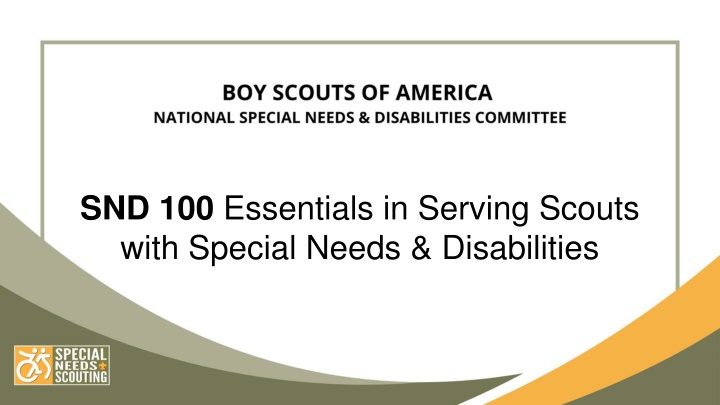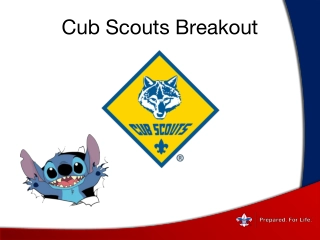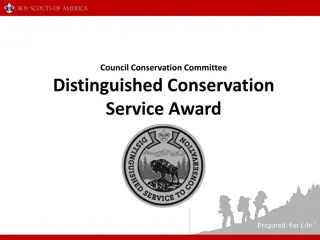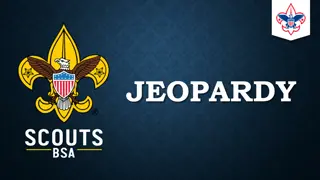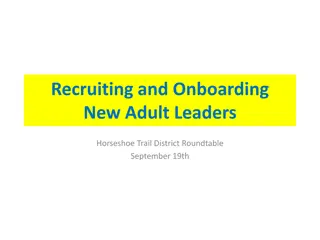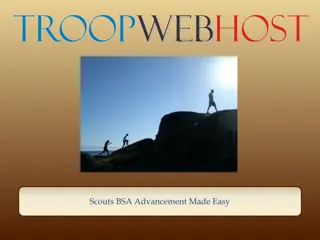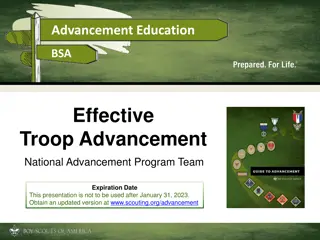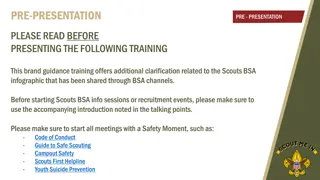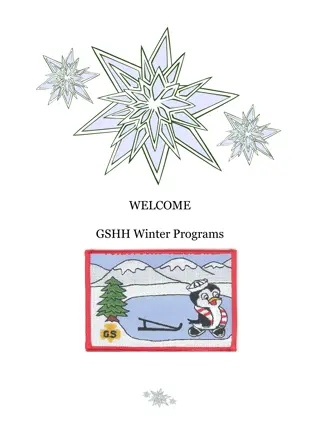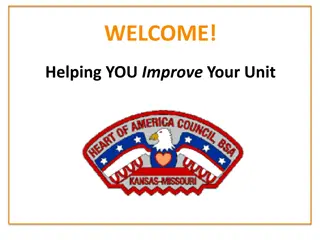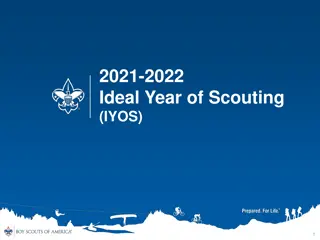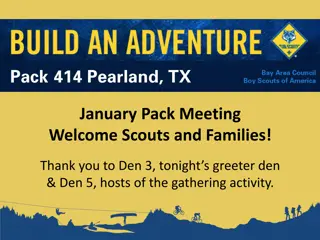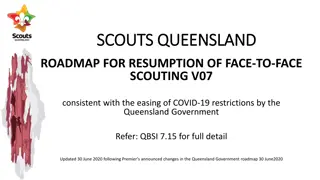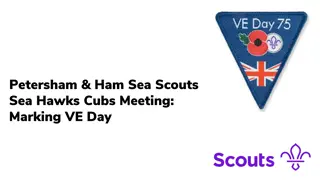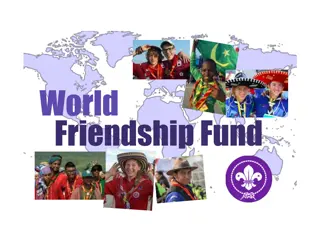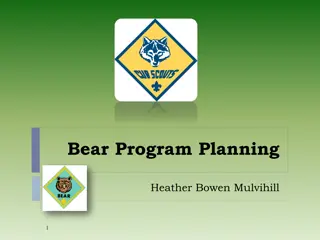Essentials in Serving Scouts with Special Needs
Develop a positive and inclusive Scouting program for all youth, including those with diverse abilities and challenges. Topics cover recognizing disabilities, adaptive approaches, advancement support, and more. Emphasize support, inclusive practices, and collaborative efforts to promote success and acceptance for all Scouts, regardless of their abilities.
Download Presentation

Please find below an Image/Link to download the presentation.
The content on the website is provided AS IS for your information and personal use only. It may not be sold, licensed, or shared on other websites without obtaining consent from the author.If you encounter any issues during the download, it is possible that the publisher has removed the file from their server.
You are allowed to download the files provided on this website for personal or commercial use, subject to the condition that they are used lawfully. All files are the property of their respective owners.
The content on the website is provided AS IS for your information and personal use only. It may not be sold, licensed, or shared on other websites without obtaining consent from the author.
E N D
Presentation Transcript
SND 100 Essentials in Serving Scouts with Special Needs & Disabilities
Course Objective Assist leaders in developing a positive and inclusive program that caters to all youth in the Scouting program, including those with diverse abilities and challenges.
Course Topics Recognizing Disabilities Inclusive Practices Collaborative Efforts Adaptive Approaches Advancement Support Conflict Resolution Training & Resources Available Support
We are more alike than we are different - Maya Angelou It is essential to recognize that youth with disabilities share the same requirements for success and acceptance, both socially and emotionally, as their peers.
What is a disability? A disability is a condition that may limit a person's movements, senses, or activities. Examples of Disability Categories Physical Learning Cognitive or Developmental Emotional Social
Offering Support to Scouts Be proactive Seek ways to support Scouts facing difficulties, even if they have not received a diagnosis or if their situation has not been disclosed to you.
Offering Support to Scouts Encourage Positive Interactions Provide Clear Instructions Develop Individualized Strategies Promote Inclusivity
Emphasizing Character Development Brave: Instill courage in scouts to stand up for inclusivity and to advocate for the needs of all individuals, regardless of their abilities. Trustworthy: Encourage all Scouts to be dependable in their interactions with others, regardless of their abilities. Helpful: Promote a culture of helpfulness and support, where scouts willingly assist each other without regard to differences in abilities. Reverent: Foster an environment of respect and reverence for all individuals, regardless of their abilities, backgrounds, or challenges.
Every Scout Deserves a Leader Who exemplifies the Scout Law and Oath by being Inclusive and Supportive Effective Communicator Empathetic and Compassionate Adaptable and Flexible Safety-Conscious But most of all . Is passionate about Scouting
Partner with Parents How can we ensure the Scout is successfully experiencing all that Scouting has to offer? Have a Joining Conference for Scouts Meet regularly with parents Praise successes and encourage Encourage parents to become active in the unit
Partner with the Scout Communicate respectfully with the Scout Collaborate to gain insight Encourage the Scout to help create solutions Encourage self-advocacy Offer flexibility Do not gossip or complain
Partner with Peers Peer buddy is an ongoing, supportive relationship between Scouts. It is NOT the same as the Buddy System.
Planning Events When planning events, consider the following: Accessibility Sensory Considerations Clear Communication Peer Involvement Safety Measures Individualized Support
Adaptive Approaches Unit leaders can make accommodations for timing, scheduling, setting, presentation, and response when helping a Scout with his/her advancement.
Possible Adaptations Materials Adaptation Architectural Adaptation Leisure Companion Adaptation Cooperative Group Adaptation Scheduling Adaptation Environmental Adaptation
Advancement Support Cub Scout, Scouts BSA and Venturing advancement Alternate Rank Requirement Application for Alternative Eagle Scout Rank Merit Badges Participation Beyond the Age of Eligibility Time extensions to earn the Eagle Scout rank
When Conflicts Occur Don t make snap decisions. Remain Calm Communicate Clearly Offer Support Find Solutions Together Seek Guidance
Corrective Action A disability is not an automatic excuse for poor behavior. Corrective action should build Self-awareness Coping and adaptation skills Maturity Wisdom
Resources National Special Needs and Disabilities Committee https://www.scouting.org/resources/disabilities-awareness/ National Special Needs and Disabilities Roundtables https://ablescouts.org/tag/snd-roundtable/ Inclusion Toolbox https://ablescouts.org/toolbox/ Able Scouts website https://ablescouts.org/ Able Scouts Newsletter - Abilities Digest https://ablescouts.org/subscribe/
Support Social Media Accounts Facebook: No Scout Left Behind:A Guide to Working with Scouts with Disabilities Instagram: No_Scout_Left_Behind National Special Needs and Disabilities Committee Chair email (for answers and assistance for any Special Needs questions/issues) SpecialNeedsChair@scouting.org
In Conclusion Thinking about this experience, Does my Scouting unit, district, or council practice this type of inclusiveness? How can I change my current approach or prepare others to be better prepared to support the youth in our program?
